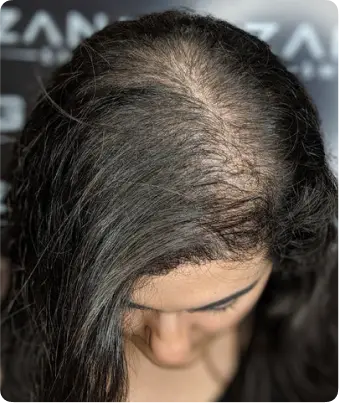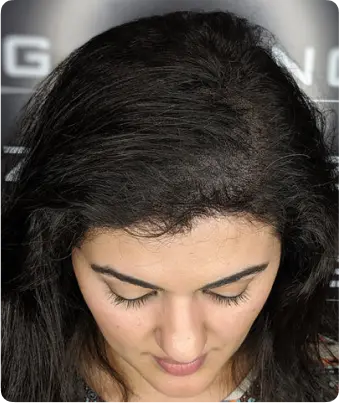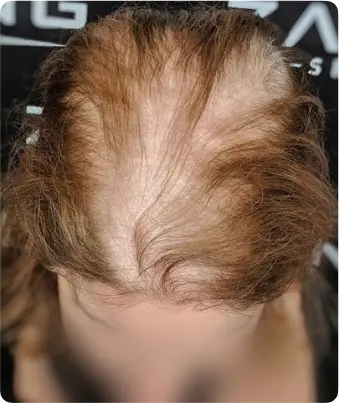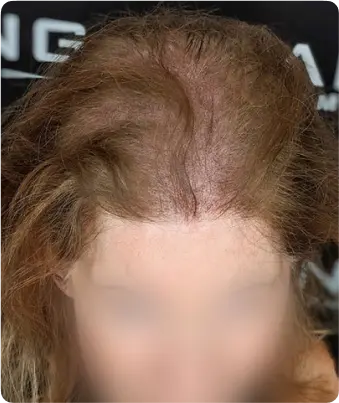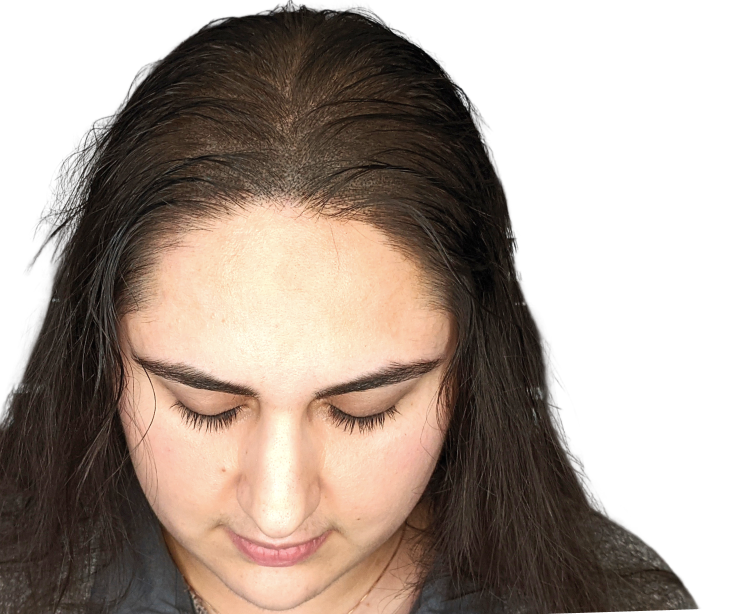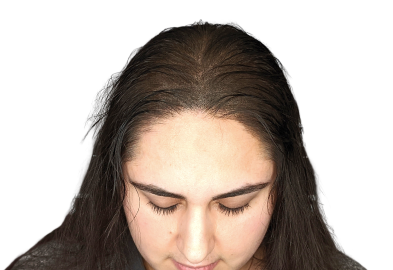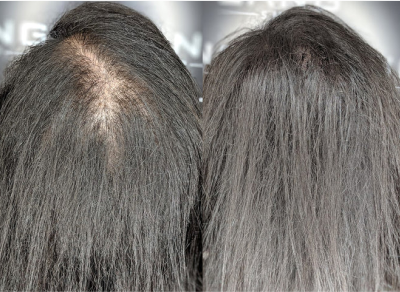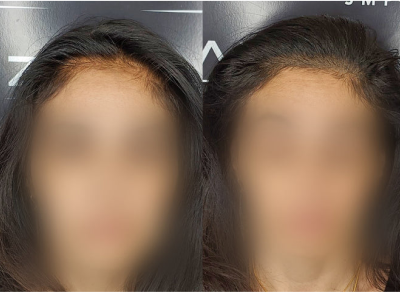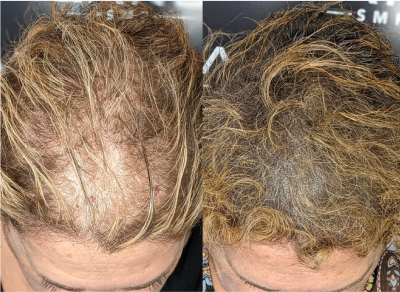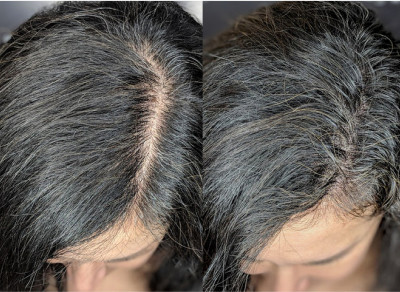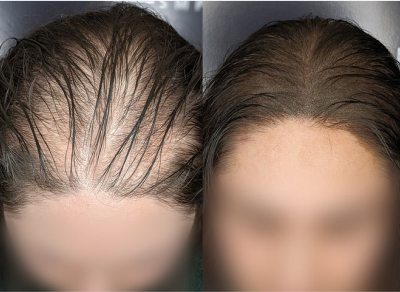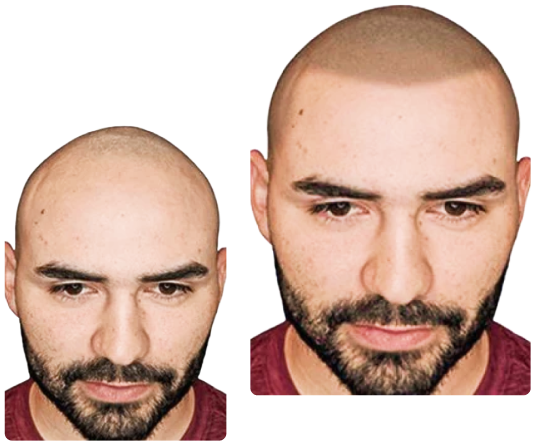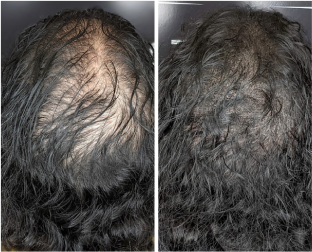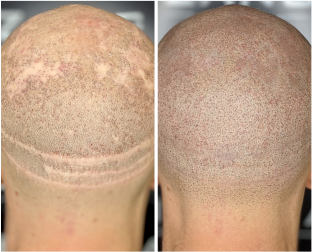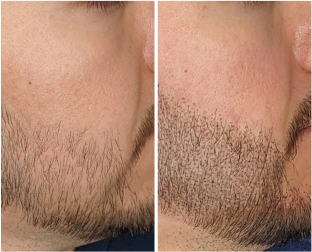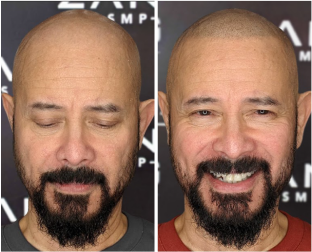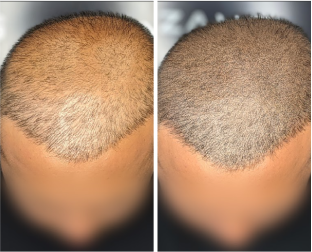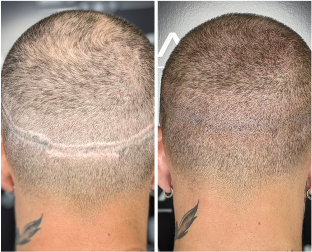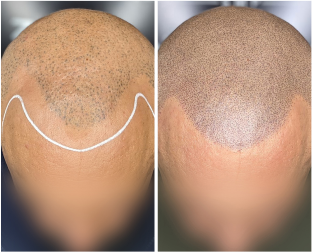Stages of Female Hair Loss
Doctors use the Ludwig scale to check female pattern hair loss. Stage 1 shows mild thinning at the part.
Stage 2 brings thinning to the central scalp, and Stage 3 spreads thinning across the scalp. Tight hairstyles, like braids, can also cause traction alopecia, leading to permanent loss at the edges.
Treatment For Female Pattern Hair Loss: Scalp Micropigmentation
If you’re dealing with hair thinning, Scalp Micropigmentation (SMP) might be the answer! It’s a non-surgical treatment that uses organic pigments to mimic hair follicles on the scalp. You’ll walk out with results right away—no downtime needed.
At Zang SMP, we make sure the pigments look just like natural follicles, so you get a fuller, denser hair appearance without surgery or transplants. SMP works wonders to mask bald spots and enhance your overall look.
The process is simple and requires two to three sessions. The first two are spaced about a week apart, targeting thinning areas. If any adjustments are needed, a final session takes place one to three months later to perfect the results.
Would a Hair Transplant Treat Hair Loss?
Hair transplants are not always the most effective solution for treating female and male pattern hair loss. These procedures depend on donor grafts, which may not be available when thinning occurs across the whole scalp.
In addition, transplanting grafts into areas with existing hair can cause damage to healthy follicles, potentially leading to a more significant hair loss problem.
Scalp micropigmentation (SMP) offers a reliable, non-surgical alternative. This innovative treatment restores the appearance of hair density instantly, without causing harm to your existing follicles. It requires no recovery time and delivers long-lasting, natural results.
At Zang SMP, we pride ourselves on delivering top-quality treatments with the most natural-looking results. Our skilled team will ensure you look and feel your best.

